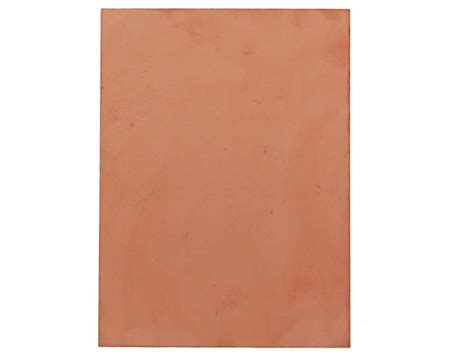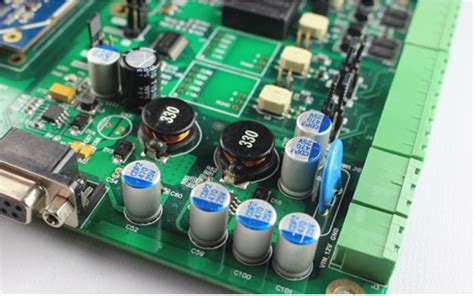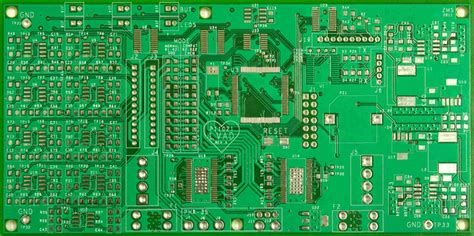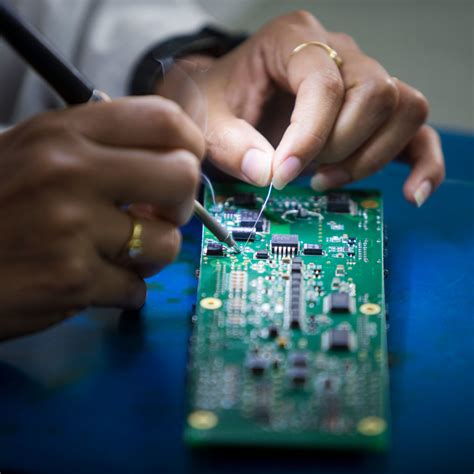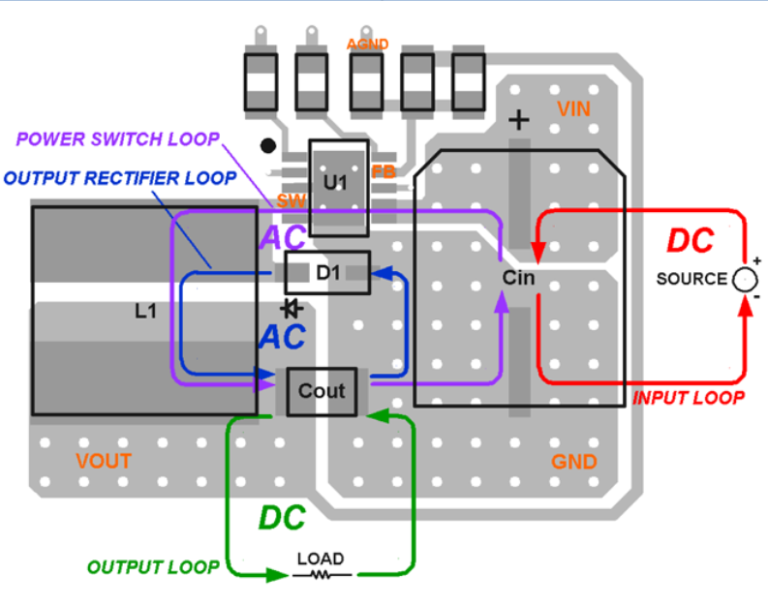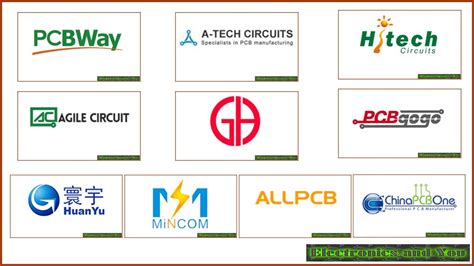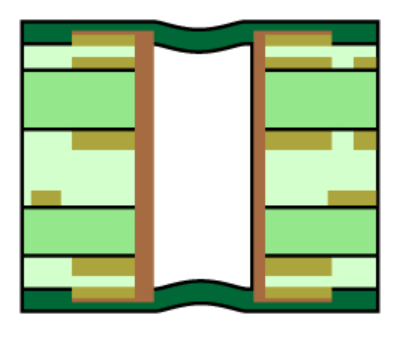The Rise of Innovative Copper Clad Board Manufacturers
Key Takeaways
The rise of innovative copper clad board manufacturers is reshaping the landscape of the electronics industry, with a significant focus on enhancing pcb assembly and pcba processes. These manufacturers are leveraging cutting-edge technology to not only improve production efficiency but also elevate the performance of their products. Through the application of advanced manufacturing techniques, they are able to create high-quality copper clad boards that meet the demanding requirements of modern electronics. Additionally, a commitment to sustainable practices is becoming a hallmark of industry leaders, ensuring that environmental considerations are integrated into their production methods. This trend not only benefits the planet but also enhances brand reputation and customer trust. As these manufacturers continue to innovate, they are paving the way for future advancements in electronic design, opening doors for new applications and functionalities that were once considered unimaginable. The ongoing evolution in this sector emphasizes the crucial role that copper clad boards play in achieving high-performance electronic devices, making their development more significant than ever.
Understanding Copper Clad Boards: A Key Component in Electronics
Copper clad boards, commonly referred to as CCBs, are fundamental in the realm of electronics, serving as the backbone for various devices we rely on daily. These boards comprise a substrate material, typically made of FR-4, that is laminated with a thin layer of copper foil. This essential structure facilitates the formation of electrical circuits and is crucial for pcb assembly processes. As the demand for complex and efficient electronics continues to rise, manufacturers have increasingly focused on innovations surrounding CCB design and production.
The integration of cutting-edge technologies has led to significant advancements in PCB assembly techniques, enhancing both functionality and durability. For instance, high-frequency applications necessitate specialized CCBs that minimize signal loss and improve performance—features that innovative manufacturers are adept at providing.
“Efficiency in production is not just about speed; it’s about creating reliable components that meet the growing demands of technology,” says Linda Chen, a leading expert in circuit board innovations.
With a strong emphasis on sustainability, many manufacturers have adopted eco-friendly practices when producing CCBs. This shift not only helps to address environmental concerns but also positions brands as responsible players in the electronics sector. By balancing performance with sustainable methods, these companies pave the way for advancements that will serve both the market and the planet effectively.
In summary, understanding the critical role copper clad boards play in electronic devices illuminates their importance within pcba processes and highlights how innovative practices are shaping the future of technology.
Innovations in Copper Clad Board Manufacturing Techniques
The landscape of copper clad board manufacturing has witnessed a remarkable transformation driven by technological advancements and innovative practices. Manufacturers are continuously exploring new methodologies to enhance the efficiency and performance of their products. One key innovation is the integration of automation in pcb assembly processes. This not only reduces production times but also minimizes human errors, resulting in high-quality pcba outputs that meet stringent industry standards.
Moreover, advanced materials are now being used to improve thermal conductivity and electrical performance, essential factors for modern electronic applications. For example, some manufacturers have developed hybrid materials that combine traditional copper with other conductive elements, enabling better signal integrity for high-frequency applications.
In addition to these technical innovations, the adoption of data analytics and IoT technologies has enabled manufacturers to monitor production processes in real time, leading to enhanced operational agility. This data-driven approach allows for better inventory management and quality control measures, ultimately streamlining the pcb assembly process.
To illustrate the impact of these innovations, consider the following table that outlines key advancements made by various companies in the industry:
| Manufacturer | Innovation | Impact on Production |
|---|---|---|
| Company A | Automation | 30% reduction in lead time |
| Company B | Hybrid Materials | Enhanced thermal performance |
| Company C | IoT Monitoring | Improved quality control |
These innovations not only bolster pcba efficiency but also contribute significantly to environmentally sustainable practices within the industry. As manufacturers continue to pursue cutting-edge technologies, they are shaping a future where copper clad boards play an even more pivotal role in electronics manufacturing.
Sustainable Practices Adopted by Leading Manufacturers
The growing concern for environmental sustainability has prompted numerous copper clad board manufacturers to implement innovative practices that minimize their ecological footprint. These leading manufacturers are embracing green technologies and materials, integrating them into their production processes to foster a more sustainable future. For instance, they are increasingly sourcing eco-friendly raw materials and employing energy-efficient machinery that significantly reduces energy consumption during production. Additionally, the adoption of recycling programs allows these manufacturers to reclaim and reuse valuable resources, further contributing to waste reduction efforts.
Furthermore, the shift towards digitalization in manufacturing systems enhances sustainable practices by optimizing resource allocation and minimizing waste. By leveraging advanced technologies such as automation and IoT (Internet of Things) solutions, manufacturers can closely monitor production lines and quickly adapt to any inefficiencies, resulting in a more sustainable operation overall. Moreover, these innovations not only align with environmental goals but also contribute to the overall efficiency of the pcb assembly and pcba processes. As the industry continues to evolve, the focus on sustainability will remain at the forefront of manufacturing strategies within the copper clad board sector, driving both performance and responsible production methods for years to come.
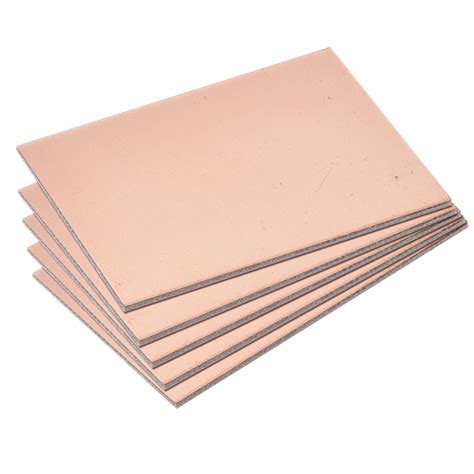
The Impact of Cutting-Edge Technology on Product Performance
The integration of cutting-edge technology in the manufacturing of copper clad boards has profoundly enhanced product performance in the electronics sector. By utilizing advanced methods such as automated manufacturing, high-frequency material formulations, and state-of-the-art pcb assembly techniques, manufacturers are able to produce pcba solutions that meet the increasing demands for efficiency and reliability. The adoption of innovative technologies not only streamlines production processes but also ensures improved electrical conductivity and thermal management within electronic devices. Additionally, the implementation of smart manufacturing principles allows companies to monitor performance metrics in real-time, leading to continuous improvements and enhanced product quality. As manufacturers embrace these technological advancements, they position themselves as leaders in delivering high-performance solutions that cater to evolving market needs. This commitment to innovation is crucial, as it empowers producers to meet the challenges posed by the fast-paced electronics industry while maintaining a focus on sustainability and efficiency. Ultimately, these advancements pave the way for a new era of copper clad board manufacturing, where performance and innovation go hand in hand.
Efficiency in Production: Streamlining Processes for Success
In the realm of modern electronics, copper clad boards play a pivotal role, particularly in pcb assembly and pcba processes. Efficient production methods are essential for manufacturers seeking to enhance output while maintaining quality. Innovative manufacturers have begun to harness advanced techniques such as automation and real-time data analytics to streamline workflows. By leveraging these technologies, they can reduce potential errors during the pcb assembly process and optimize their pcba operations, ultimately resulting in faster turnaround times and higher precision. Additionally, implementing lean manufacturing principles allows these producers to minimize waste and improve resource allocation. The combination of high-quality materials and refined production techniques not only elevates performance but also ensures sustainability within the industry. As manufacturers continue to adopt these innovative strategies, the overall efficiency in production processes is significantly transformed, setting a new benchmark for success in the field of electronics.
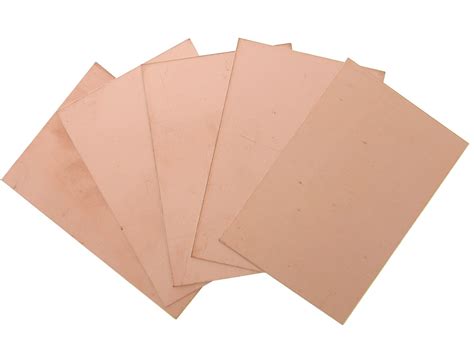
Case Studies of Pioneering Copper Clad Board Manufacturers
In the evolving landscape of electronics, several copper clad board manufacturers have emerged as leaders through their innovative approaches. For instance, one notable manufacturer has incorporated advanced pcb assembly techniques that significantly reduce production time while enhancing product reliability. Their commitment to leveraging sustainable practices has not only gained them recognition but also set a benchmark within the industry. Another pioneering company has introduced smart technologies in their manufacturing processes, which include automation and real-time monitoring systems, vastly improving pcba quality and consistency. These advancements illustrate how modern techniques—combined with eco-friendly initiatives—are transforming traditional frameworks into more efficient and performance-driven environments. As such, these case studies highlight the intersection of innovation and sustainability within the realm of copper clad boards, underscoring their essential role in shaping the future of electronic component manufacturing. Potential challenges remain, but the successes of these manufacturers demonstrate a viable pathway forward for others in the industry looking to enhance their methods and offerings.
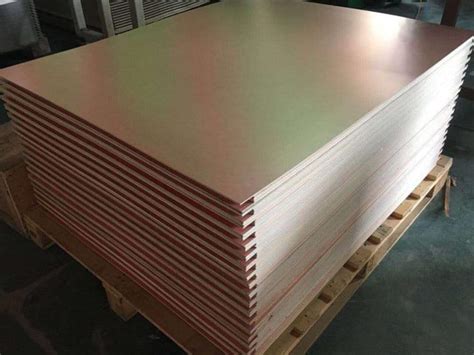
Future Trends in the Copper Clad Board Industry
The copper clad board industry is poised for significant transformation as it adapts to the evolving needs of technology and market demands. One of the most notable trends is the integration of advanced materials and innovative designs, which enhance not only the efficiency of PCB assembly but also the overall performance of electronic devices. Manufacturers are increasingly focusing on lightweight and high-density copper clad laminates that allow for more compact designs without compromising functionality. Moreover, the rise of smart technologies and the Internet of Things (IoT) is reshaping how PCBA processes are approached. These developments necessitate a shift toward more robust manufacturing techniques that can accommodate complex circuitry and miniaturization.
In parallel, sustainability is becoming a core aspect of operational strategies within the industry. Leading manufacturers are adopting eco-friendly practices, such as utilizing recyclable materials and reducing waste during production, which not only benefits the environment but also aligns with consumer demand for responsible sourcing. The emergence of smart manufacturing technologies, including automation and artificial intelligence, promises to streamline operations further, enhancing both productivity and product quality. As these innovative practices gain traction, manufacturers who prioritize both performance and sustainability stand to gain a competitive edge in this dynamic market landscape. This intersection of technology, sustainability, and efficiency is paving the way for a new era in copper clad board manufacturing, ultimately influencing how electronic components are designed and assembled in the future.
Challenges and Opportunities for Emerging Manufacturers
The landscape for emerging copper clad board manufacturers is continually evolving, presenting both challenges and opportunities. One significant challenge is the increasing competition in the pcb assembly market, which demands that new entrants not only meet quality standards but also innovate to differentiate themselves. Manufacturers need to stay abreast of advancements in pcba technology, ensuring they implement cutting-edge solutions that enhance their production capabilities. However, this innovation can often be cost-prohibitive for smaller companies lacking the financial resources of industry giants. On the other hand, there is a vast opportunity for these emerging manufacturers to adopt sustainable practices that appeal to environmentally-conscious consumers and companies alike. By integrating environmentally-friendly materials and processes into their operations, they can create a niche market for themselves while simultaneously addressing global sustainability concerns. Furthermore, leveraging advanced technologies in production can streamline processes and improve efficiency, providing a competitive edge in both product design and manufacturing methods. The ability to adapt quickly and innovate will define not only their success but also their contribution to shaping the future of the copper clad board industry.
Conclusion
In summary, the landscape of copper clad board manufacturers is rapidly evolving, fueled by innovative technologies and a commitment to sustainability. These manufacturers are integrating advanced techniques in pcb assembly and pcba, ensuring that the products they deliver meet the rigorous standards demanded by the electronics industry. The shift towards smarter manufacturing processes not only enhances efficiency but also significantly elevates product performance. As these companies embrace sustainable practices, they are setting new benchmarks for environmental responsibility while continuing to drive industry innovation. This transformative journey not only benefits manufacturers but also ultimately results in high-quality, reliable products for consumers, fostering a more sustainable approach to electronic component production. The future holds immense potential as these pioneers navigate challenges and seize emerging opportunities in the copper clad board sector.
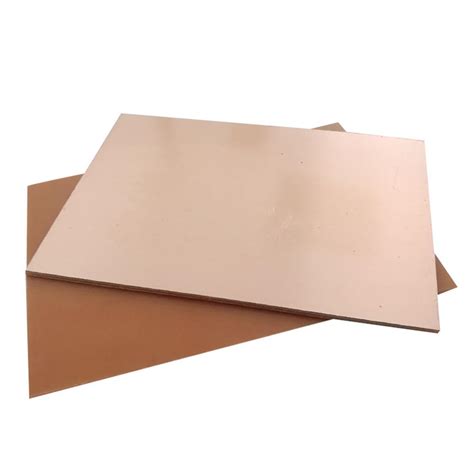
FAQs
What is a copper clad board?
A copper clad board is a key component in electronic devices, featuring a substrate layer coated with a thin layer of copper. This design allows for optimal conductivity and serves as a foundational material for various PCB assembly processes.
How do innovative manufacturers differ from traditional ones?
Innovative manufacturers deploy cutting-edge technologies and solid sustainable practices, focusing on enhancing efficiency and product performance. They often utilize advanced materials and automated techniques in the PCB assembly process, leading to superior results.
What role does sustainability play in copper clad board manufacturing?
Sustainability is increasingly pivotal, with manufacturers adopting eco-friendly production methods and materials. This commitment not only reduces environmental impact but also aligns with the growing demand for sustainable electronics, which is crucial for achieving long-term industry viability.
Can you explain the significance of PCBA in electronics?
The term PCBA, short for printed circuit board assembly, refers to the complete assembly of copper clad boards, incorporating components that enable effective operation. It plays an essential role in producing reliable and efficient electronic devices, essential for modern technology.
What future trends do we expect in the copper clad board industry?
The future of the copper clad board industry points towards even greater advancements in technology, sustainability, and efficiency. Expect to see manufacturers continuing to push boundaries through innovation, resulting in enhanced performance levels across the entire electronics sector.

